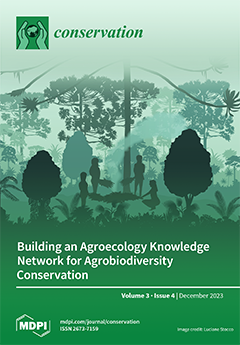This study was undertaken in the Himalayan basin, in the river Lohawati, Uttarakhand, to study its hydro-morphological characteristics and prioritise the watersheds using geospatial tools. Advanced Spaceborne Thermal Emission and Reflection (ASTER-30 m) data and the Survey of India’s topographic sheets were used to analyse the study area comprehensively. Nine watersheds were identified within the basin in order to calculate the hydro-morphological characteristics in terms of basic, shape, texture, and relief aspects. The basin was identified as being elongated, with a total drainage area of 337.48 km
2. The interaction between the terrain, rock formations, and precipitation levels produced a branching structure in the areas drainage system that ranged from dendritic to sub-dendritic. The basin had been classified as a fifth-order basin, comprising a network of 500 stream segments spanning a total length of 492.41 km. In each of the watersheds, the primary streams are of the first order, followed by those of the second order, and so forth. The physiography and lithology of the basin have a significant influence on this pattern. The calculated elongation ratio, circulatory ratio, form factor, shape index, and shape factor ranged from 0.57 to 0.80, 0.35 to 0.64, 0.26 to 0.50, 1.98 to 3.89, and 0.57 to 1.77, respectively. These values indicate that watersheds are elongated, suggesting moderate lag times. The parameters, including drainage density (0.98 to 1.62), stream frequency (1.07 to 1.59), infiltration number (1.04 to 2.59), drainage texture (0.67 to 2.82), and drainage intensity (0.93 to 1.12), pointed towards the coarser drainage texture, higher infiltration, and minimal runoff characteristics of the basin. In light of the relief characteristics of the basin, a higher basin relief, relief ratio, and relative relief were observed for the watersheds, indicating the possibility of higher erosion and deforestation rates. Using the Weighted Sum Analysis (WSA) method, the computed factors were utilised to rank the watersheds based on their potential for erosion. Based on the WSA approach, watersheds were classified into high-, moderate-, and low-prioritisation zones. This further indicates that 36.14% (121.95 km
2) of watersheds are in the high-priority zone, and that 48.84% (164.91 km
2) and 15.00% (50.62 km
2) of watersheds are in the moderate- and low-priority zones, respectively. The WSA is a practical strategy to prioritise watersheds when making appropriate decisions.
Full article



